


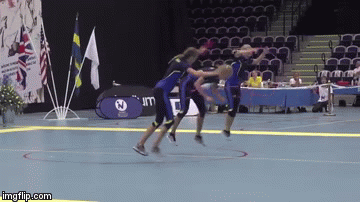
A Swedish Girls’ Team at the 2016 Rope Skipping World Tournament (video here)
(I’d never seen competitive jump rope, and it kind of blew my mind, so thought I’d share. have a good friday, tumblr.)




(I’d never seen competitive jump rope, and it kind of blew my mind, so thought I’d share. have a good friday, tumblr.)
ErinWatch both videos.

Getting a surprise from a friend is always nice, but it’s probably especially delightful when your friend is famously quirky French film director Michel Gondry. Gondry—whose most recent film, Microbe & Gasoline, debuted back in July—apparently was feeling especially whimsical in the shower the other day, and so he set up his camera and decided to make a music video for the recently unearthed White Stripes song “City Lights”:

According to a press release from White Stripes frontman Jack White, the video was made completely independently by Gondry without asking permission from the band first. They clearly weren’t mad about it, though—who would be?—and they’re now sharing this cute gesture of friendship and fandom with the public. Gondry, of course, has worked with The White Stripes before, most notably directing their famous Lego-based video for “Fell In Love With A Girl.”
As for ...

Just when you think technology has taken over irrevocably, nature has a way of striking back and asserting her dominance. Such is the case with Guard From Above, a raptor-training program currently operating out of the Netherlands. The Netherlands’ national police have teamed up with the program to snatch unauthorized drones out of the sky with the expert precision of bald eagles, Design Boom reports.
As drones increase in popularity, managing them will pose a major headache for several organizations including air traffic control agencies, firefighters, and local police. Using birds of prey to keep rogue drones in check isn’t as wild of an idea as you might think, says chief operating officer and co-founder Ben de Keijzer, who has more than 25 years of experience training birds. According to Guard From Above’s website, it’s a “low-tech solution for a high-tech problem.”
The National Audubon Society’s Geoff LeBaron says that tension between drones and birds of prey already exists thanks to the invasive, aggressive nature of the unmanned aircrafts. LeBaron, who also runs the organization’s Christmas Bird Count which tracks U.S. bird populations, said in an interview with The Guardian,
“The drones are pretty much the size of a bird of prey, so smaller birds on the ground aren’t likely to mob a bird of prey when it’s flying—but larger birds are, especially when it’s around their nests. The birds of prey are having an aggressive interaction to defend their territory from another bird of prey.”
LeBaron also commented on the expert precision of these large birds, explaining that the “birds can hit the drone in such a way that they don’t get injured by the rotors.” He adds, “They seem to be whacking the drone right in the center so they don’t get hit; they have incredible visual acuity and they can probably actually see the rotors.”
Watch the video above to see the birds in action, and think twice next time you decide to fly your drone into unchartered territory.
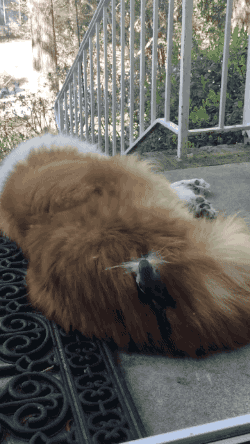
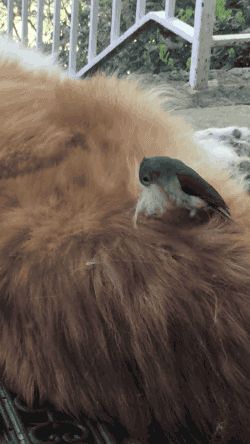
[A large and fluffy dog is sleeping on a porch. A tiny grey bird is bouncing around on the dog, stealing its fur. Its tiny beak is full of dog floof. The dog is totally still and does not appear to have noticed the thief.]
a burglar
a birbler

If there’s one thing that the internet loves more than Disney princesses, it’s cats! And if there’s one thing that the internet loves more than cats, it’s sharks! Particularly sharks that don’t have anything to do with Disney princesses. That’s why the internet’s gonna go on a feeding frenzy for this series of illustrations.
Ariel should be trying to get her voice back, but at the moment she’s kind of preoccupied with this ball of yarn, not to mention the many sea mammals, like seals and small whales, that she feeds on almost exclusively.
For Jasmine, this beam of sunlight on the living room couch is like “a whole new world,” and, by the way, her jaw is on a hinge allowing her to open it extra wide when feeding on deep-water fish and crustaceans.
ErinRice

Thanks to one of those odd periodic showbiz confluences—the kind that gives us two killer earthquake movies in the same year or two animated films about talking ants or two Truman Capote biopics—the 30 For 30 docuseries O.J: Made In America is hitting TV screens just two months after FX had one of its biggest hits with The People V. O.J. Simpson: American Crime Story. The FX series was so excellent and revelatory that the millions who watched it might feel like they don’t need the ESPN version. But that’d be a mistake. This 30 For 30 is its own animal: a five-part, eight-hour stunner, of which less than half is about the Hall Of Fame running back’s murder trial. The rest is spent on who O.J. Simpson really is.
Better points of comparison for Made In America might be The Jinx ...
"They're accusations. They're not in the headlines. There's no obligation to mention them." These were the objections from a producer at my network. It was September 2014 and I was preparing to interview a respected journalist about his new biography of Bill Cosby. The book omitted allegations of rape and sexual abuse against the entertainer, and I intended to focus on that omission. That producer was one of several industry veterans to warn me against it. At the time, there was little more than a stalled lawsuit and several women with stories, all publicly discredited by Cosby's PR team. There was no criminal conviction. It was old news. It wasn't news.
So we compromised: I would raise the allegations, but only in a single question late in the interview. And I called the author, reporter to reporter, to let him know what was coming. He seemed startled when I brought it up. I was the first to ask about it, he said. He paused for a long time, then asked if it was really necessary. On air, he said he'd looked into the allegations and they didn't check out.
Today, the number of accusers has risen to 60. The author has apologized. And reporters covering Cosby have been forced to examine decades of omissions, of questions unasked, stories untold. I am one of those reporters — I'm ashamed of that interview.
Some reporters have drawn connections between the press' grudging evolution on Cosby and a painful chapter in my own family's history. It was shortly before the Cosby story exploded anew that my sister Dylan Farrow wrote about her own experiences — alleging that our father, Woody Allen, had "groomed" her with inappropriate touching as a young girl and sexually assaulted her when she was 7 years old.
Being in the media as my sister's story made headlines, and Woody Allen's PR engine revved into action, gave me a window into just how potent the pressure can be to take the easy way out. Every day, colleagues at news organizations forwarded me the emails blasted out by Allen's powerful publicist, who had years earlier orchestrated a robust publicity campaign to validate my father's sexual relationship with another one of my siblings. Those emails featured talking points ready-made to be converted into stories, complete with validators on offer — therapists, lawyers, friends, anyone willing to label a young woman confronting a powerful man as crazy, coached, vindictive. At first, they linked to blogs, then to high-profile outlets repeating the talking points — a self-perpetuating spin machine.

Mia and Allen with Ronan (left) and daughter Dylan in 1988.
The open CC list on those emails revealed reporters at every major outlet with whom that publicist shared relationships — and mutual benefit, given her firm's starry client list, from Will Smith to Meryl Streep. Reporters on the receiving end of this kind of PR blitz have to wonder if deviating from the talking points might jeopardize their access to all the other A-list clients.
In fact, when my sister first decided to speak out, she had gone to multiple newspapers — most wouldn't touch her story. An editor at the Los Angeles Times sought to publish her letter with an accompanying, deeply fact-checked timeline of events, but his bosses killed it before it ran. The editor called me, distraught, since I'd written for them in the past. There were too many relationships at stake. It was too hot for them. He fought hard for it. (Reached by The Hollywood Reporter, a spokesperson for the Los Angeles Times said the decision not to publish was made by the Opinion editors.)
When The New York Times ultimately ran my sister's story in 2014, it gave her 936 words online, embedded in an article with careful caveats. Nicholas Kristof, the Pulitzer Prize-winning reporter and advocate for victims of sexual abuse, put it on his blog.
Soon afterward, the Times gave her alleged attacker twice the space — and prime position in the print edition, with no caveats or surrounding context. It was a stark reminder of how differently our press treats vulnerable accusers and powerful men who stand accused.
Perhaps I succumbed to that pressure myself. I had worked hard to distance myself from my painfully public family history and wanted my work to stand on its own. So I had avoided commenting on my sister's allegations for years and, when cornered, cultivated distance, limiting my response to the occasional line on Twitter. My sister's decision to step forward came shortly after I began work on a book and a television series. It was the last association I wanted. Initially, I begged my sister not to go public again and to avoid speaking to reporters about it. I'm ashamed of that, too. With sexual assault, anything's easier than facing it in full, saying all of it, facing all of the consequences. Even now, I hesitated before agreeing to The Hollywood Reporter's invitation to write this piece, knowing it could trigger another round of character assassination against my sister, my mother or me.
But when Dylan explained her agony in the wake of powerful voices sweeping aside her allegations, the press often willing to be taken along for the ride, and the fears she held for young girls potentially being exposed to a predator — I ultimately knew she was right. I began to speak about her more openly, particularly on social media. And I began to look carefully at my own decisions in covering sexual assault stories.
I believe my sister. This was always true as a brother who trusted her, and, even at 5 years old, was troubled by our father's strange behavior around her: climbing into her bed in the middle of the night, forcing her to suck his thumb — behavior that had prompted him to enter into therapy focused on his inappropriate conduct with children prior to the allegations.

Allen with Farrow (then known as Satchel) in 1994, after the director lost his custody battle with ex-girlfriend Mia Farrow.
But more importantly, I've approached the case as an attorney and a reporter, and found her allegations to be credible. The facts are persuasive and well documented. I won't list them again here, but most have been meticulously reported by journalist Maureen Orth in Vanity Fair. The only final legal disposition is a custody ruling that found Woody Allen's behavior "grossly inappropriate" and stressed that "measures must be taken to protect [Dylan]."
On May 4, The Hollywood Reporter published a cover interview with Woody Allen, quirky auteur. To me it is a sterling example of how not to talk about sexual assault. Dylan's allegations are never raised in the interview and receive only a parenthetical mention — an inaccurate reference to charges being "dropped." THR later issued a correction: "not pursued."
The correction points to what makes Allen, Cosby and other powerful men so difficult to cover. The allegations were never backed by a criminal conviction. This is important. It should always be noted. But it is not an excuse for the press to silence victims, to never interrogate allegations. Indeed, it makes our role more important when the legal system so often fails the vulnerable as they face off against the powerful.
Here is exactly what charges not being pursued looked like in my sister's case in 1993: The prosecutor met with my mother and sister. Dylan already was deeply traumatized — by the assault and the subsequent legal battle that forced her to repeat the story over and over again. (And she did tell her story repeatedly, without inconsistency, despite the emotional toll it took on her.) The longer that battle, the more grotesque the media circus surrounding my family grew. My mother and the prosecutor decided not to subject my sister to more years of mayhem. In a rare step, the prosecutor announced publicly that he had "probable cause" to prosecute Allen, and attributed the decision not to do so to "the fragility of the child victim."
My mother still feels it was the only choice she could make to protect her daughter. But it is ironic: My mother's decision to place Dylan's well-being above all else became a means for Woody Allen to smear them both.

Farrow with his mother, Mia Farrow, at the Time 100 Gala in April 2015.
Very often, women with allegations do not or cannot bring charges. Very often, those who do come forward pay dearly, facing off against a justice system and a culture designed to take them to pieces. A reporter's role isn't to carry water for those women. But it is our obligation to include the facts, and to take them seriously. Sometimes, we're the only ones who can play that role.
Confronting a subject with allegations from women or children, not backed by a simple, dispositive legal ruling is hard. It means having those tough newsroom conversations, making the case for burning bridges with powerful public figures. It means going up against angry fans and angry publicists.
There are more reporters than ever showing that courage, and more outlets supporting them. Many are of a new generation, freed from the years of access journalism that can accrete around older publications. BuzzFeed has done pioneering reporting on recent Hollywood sexual assault stories. It was Gawker that asked why allegations against Bill Cosby weren't taken more seriously. And it is heartening that The Hollywood Reporter asked me to write this response. Things are changing.
But the old-school media's slow evolution has helped to create a culture of impunity and silence. Amazon paid millions to work with Woody Allen, bankrolling a new series and film. Actors, including some I admire greatly, continue to line up to star in his movies. "It's not personal," one once told me. But it hurts my sister every time one of her heroes like Louis C.K., or a star her age, like Miley Cyrus, works with Woody Allen. Personal is exactly what it is — for my sister, and for women everywhere with allegations of sexual assault that have never been vindicated by a conviction.
Tonight, the Cannes Film Festival kicks off with a new Woody Allen film. There will be press conferences and a red-carpet walk by my father and his wife (my sister). He'll have his stars at his side — Kristen Stewart, Blake Lively, Steve Carell, Jesse Eisenberg. They can trust that the press won't ask them the tough questions. It's not the time, it's not the place, it's just not done.
That kind of silence isn't just wrong. It's dangerous. It sends a message to victims that it's not worth the anguish of coming forward. It sends a message about who we are as a society, what we'll overlook, who we'll ignore, who matters and who doesn't.
We are witnessing a sea change in how we talk about sexual assault and abuse. But there is more work to do to build a culture where women like my sister are no longer treated as if they are invisible. It's time to ask some hard questions.
Farrow's investigative reporting series, "Undercovered With Ronan Farrow," airs on NBC's 'Today.'
A version of this story first appeared in the May 20 issue of The Hollywood Reporter magazine. To receive the magazine, click here to subscribe.
If the future looks anything like the Met Gala red carpet looked last night, it’s going to be boring, and rest too heavily on conventional tastes. The theme, Manus X Machina, should have inspired more outlandish and innovative designs, but celebrities and designers alike were inhibited by a deference to traditional beauty and a lack of imagination. Even Lady Gaga looked comparatively normal in a bedazzled body suit and jacket. The truth is, “the intersection of art and technology” is a bit of cliche in the creative industry. Too often, it serves as a placeholder for “the future”. But that interpretation ignores the realities we’re living in now, a present in which unmanned planes trawl the skies and surveillance technology is helping corporations and governments build robust databases of our facial maps. What does fashion look like when it takes into account our high-surveilled environments, or the facts of climate change? Here are some suggestions for our tech-challenged celeb colleagues:

This metal-plated garment shield against thermal surveillance used by military drones. The interior is lined with black silk and it comes with a thermally reflective visor while the silver-plated exterior is hand oxidized with a brush stroke camouflage pattern. The item will set you back $2,500, but this is drone protection we’re talking about. No amount of “fiber optic woven organza” in a Zac Posen gown (that would likely cost more than double) is going to protect you from that.

This project is the creation of Berlin artist and researcher Adam Harvey, who wanted to create a functional handbag that would also protect celebrities from the prying lenses of paparazzi cameras. This accessory—currently just a prototype—flashes a 12,000 lumen LED pulse when activated, effectively overexposing the camera’s sensor. Camera-shy celebs like Sia might find this high-tech clutch useful.

Here’s fashion for a progressively warmer planet: Van Dongen’s beautiful wool and leather designs implement the use of solar cells, which, when exposed to the sun, produce enough electricity to charge your smartphone battery to 50 percent. There’s already a coat, dress and shirt in the collection (all prototypes), so pretty soon your entire wardrobe will be capable of generating sustainable energy.
Mayer, who is an artist and filmmaker, diverges from the typical smokey eyes and winged eyeliners typically demonstrated on YouTube makeup tutorials and instead shows viewers how to make up their facse to evade cameras and facial recognition technology. Nothing about this is conventionally beautiful—and some Hollywood makeup artists might even be repulsed by it—but it will allow you to navigate the world undetected by computers, machines, robots and other facial recognition devices. And all you need is white eyeshadow, black lipstick, and a few other implements.

Neri Oxman’s biomimetic wearables would turn heads in any room. These flamboyant pieces are not only inspired by nature but actually mimic its functions. The capillaries that compose Al-Qamar, store and generate oxygen, with pockets for “algae-based purification” and “biofuel collection”. Lady Gaga could have really pulled off Otaared, a piece of protective headgear that is designed to contain calcifying bacteria, which, over time, would grow bone structures.
Amazing:
Annotated lyrics here; more on the Black Trump site.
Instances of the word love in the 12 Republican and 9 Democratic debates:
CLINTON 4 CRUZ 1 KASICH 13 SANDERS 8 TRUMP 39
While those of us in the states were mired in election drama, across the Atlantic Brits came together to celebrate a sacred and time-honored holiday: #EdBallsDay.
On April 28th, 2011, British Member of Parliament Edward Balls mistook the field for writing tweets for the search bar. Instead of searching for his name, he tweeted his name. And, because his name is Ed Balls, people lost their damn minds. At the time of this writing, the original tweet has over 70k retweets and 40k likes.
It is entirely unremarkable that a British MP whose last name is Balls got so much attention for tweeting his own name. What is remarkable is that people still remember every year. Many a think piece has been written on the ways the internet is destroying our brains, specifically our memories. Plato, the original think piece writer, recounted a story about some king who I can’t remember to make the point that writing would induce forgetfulness in those who learned it. Thousands of years later, people are still buttering their bread on the same idea. The internet ruins our memory. But what about the internet’s memory?
Ed Balls even made a cake to celebrate.
For Marshal McLuhan, what is “new” about a new medium is its capacity to extend the human sensorium to new scales. Speech allows us to transfer thought from our brains to the air and to other brains. Writing transfers these thoughts to a durable surface. Television broadcasts material sensations across the world. And with the internet, it often seems like everything is happening everywhere all of the time. This new scale requires new modes of cognition, such as Katherine Hayles’ “hyper attention” in which we pull information from multiple sources in quick succession, scan documents for key words, and frequently switch between tasks.
One of the results of this new scale of human cognition is the role of networked information technology in determining what we remember and how we remember it. The internet allows us to extend our memory outside of our individual minds, with important consequences for what gets remembered and how we are reminded of things. Something that has struck me throughout this election season is the work that Bernie Sanders supporters have done digging up old video clips and transcripts to write narratives that are lacking in major news outlets. The fact that no millennial remembers a speech Sanders made before the Senate in 1992 does not preclude their ability to find it, watch it, and use it to make a political argument. This becomes all the more important when these narratives are lacking from other vehicles of mediated memory. In other words, if mainstream news sources are failing to remember important historical moments and contexts, the affordances of digital media offer an alternative.
If every single individual who was party to Ed Balls’ tweet had to remember to celebrate April 28th each year, it’s unlikely that this fabulous holiday would have survived. But it only takes a few individuals, or perhaps one individual with a large enough audience, to remember given the affordances of Twitter. Over time, the effect snow balls—more and more people remember each year, and as #EdBallsDay gains greater traction it enters the consciousness of more people. Who knows; by April 28th 2021 it might be a national holiday.
So to my British friends, a happy belated Ed Balls Day. I’m sorry I didn’t send a card. I’m sure I’ll remember to next year though. Or, more likely, the internet will remember for me.
Britney is on Twitter.
1. Be prepared to be confused with the other black birder. Yes, there are only two of you at the bird festival. Yes, you’re wearing a name tag and are six inches taller than he is. Yes, you will be called by his name at least half a dozen times by supposedly observant people who can distinguish gull molts in a blizzard.
2. Carry your binoculars — and three forms of identification — at all times. You’ll need the binoculars to pick that tufted duck out of the flock of scaup and ring-necks. You’ll need the photo ID to convince the cops, FBI, Homeland Security, and the flashlight-toting security guard that you’re not a terrorist or escaped convict.
3. Don’t bird in a hoodie. Ever.
4. Nocturnal birding is a no-no. Yeah, so you’re chasing that once-in-a-lifetime rare owl from Outer Mongolia that’s blowing up your twitter alert. You’re a black man sneaking around in the nether regions of a suburban park — at dusk, with a spotting scope. Guess what? You’re going to have some prolonged conversations with the authorities. Even if you look like Forest Whitaker — especially if you look like Forest Whitaker.
5. Black birds — any black birds — are your birds. The often-overlooked blackbirds, family Icteridae, are declining across the board. Then there are the other birds that just happen to be black — crows and their kin are among the smartest things with feathers and wings. They’re largely ignored because of their ubiquity and often persecuted because of stereotype and misunderstanding. Sounds like profiling to me.
6. The official word for an African American in cryptic clothing — camo or otherwise — is incognegro. You are a rare bird, easy to see but invisible just the same. Until you snap off the identification of some confusing fall warbler by chip note as it flies overhead at midnight, or a juvie molting shorebird in heavy fog, you will just be a token.
7. Want to see the jaws of blue-blooded birders drop faster than a northern gannet into a shoal of shad? Tell them John James Audubon, the patron saint of American ornithology, had some black blood coursing through his veins. Old JJ’s mom was likely part Haitian. Hey, if we can claim Tiger Woods . . .
8. Use what’s left of your black-president momentum on the largely liberal birder crowd to step to the front of the spotting-scope line to view that wayward smew that wandered into U.S. waters from Eurasia. Tell them you’re down with Barack, and they’ll move even more to the left to let you look at the doomed duck. After all, you stand about as much of a chance of seeing a smew again as you do of seeing another black president.
9. You’re an endangered species — extinction looms. You know all the black birders like siblings and can count them on two hands. You’re afraid to have lunch with them all because a single catastrophe could wipe the species from the face of the earth. There’s talk and posturing about diversifying the hobby, but the money is not where the mouths are. People buy binoculars that would fund the economy of a small Caribbean island — where, coincidentally, lots of neotropical migratory birds winter, and where local people of color might contribute to their conservation if more birders cared about more than counting birds.
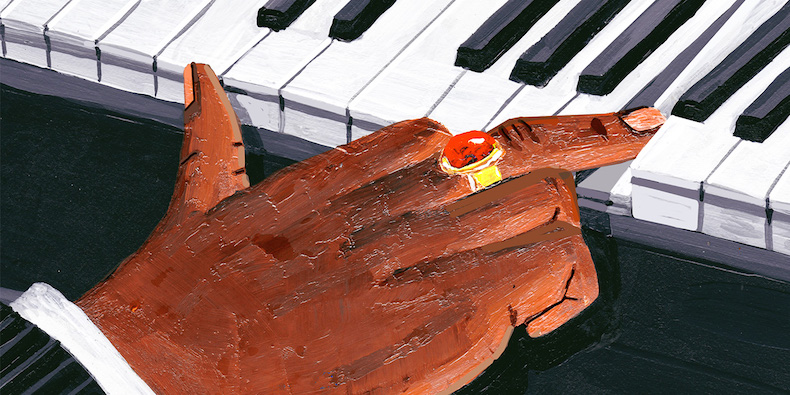
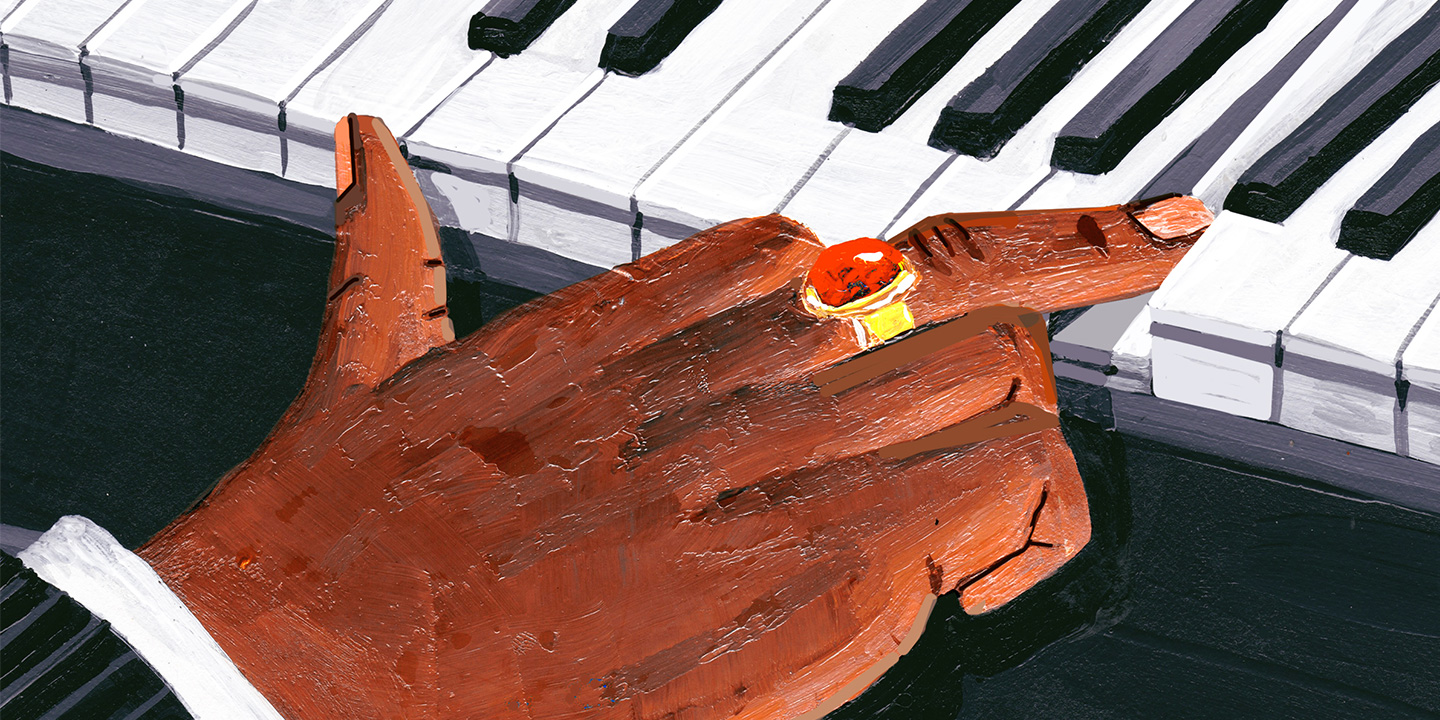
The following story is featured in the latest issue of our print quarterly, The Pitchfork Review. Subscribe to the magazine here.
In 1964, Thelonious Sphere Monk appeared on the cover of Time magazine. It was a remarkable achievement for a middle-aged black man who had been broke just a decade before. Despite the fact that the virtuosic pianist and bebop originator’s compositions were beginning to be studied by jazz and classical musicians alike, most of his nearly 15-year career had been spent in relative obscurity. The Time cover seemed to mark the end of all that. Churchill had been on the cover of Time. FDR. Clark Gable. This was for-real business. And they didn’t just take a photo. They had a portrait painted: Monk’s profile in a feathered chapeau, his stately gaze off to the distance as though he were surveying the kingdom he ruled. A black man who sometimes played piano with his forearms in portrait on the cover of one of the most serious magazines in the country. In 1964. What the hell.
Consider that Monk was a largely self-taught pianist from a section of New York City that doesn’t even exist anymore. San Juan Hill—reportedly named in honor of its population of former Buffalo Soldiers whose bravery won one of the most decisive battles of the Spanish American War—stood hemmed in by Amsterdam and West End Avenues, 59th and 64th Streets. The blackest section in Manhattan at the time, it was predictably marked for wholesale demolition to make way for Lincoln Center and its subsequent streams of tuxedoed season subscribers. But in its day, it stood as a wry and tough neighborhood of fighters and families, hustlers and musicians, so quintessentially New York that West Side Story was filmed on its streets. This was the soil from which Monk sprang. His family moved there from North Carolina when he was just 4, sealing his fate as a New Yorker.
A quiet but confident child, he fell immediately in love with the piano after taking 15-cent lessons at the community center, and hustled his way into jamming with every local musician he could. He won Amateur Night at the Apollo so many times he was banned by the time he was 13. He attended the prestigious Stuyvesant High School, but dropped out to tour the South as an accompanist for a traveling preacher. Unlike the jazzman who travels north with an instrument case and a dream, Monk was, almost by birth, an apartment dweller, a man utterly at home in the dense and sardonic temperament of Manhattan.
He was already experimenting with his brand of off-kilter boogie woogie by the time he reached his late teens. A master of stride piano, he forged his sound from pieces left by the jaunty traditions of Jelly Roll Morton and James P. Johnson, self-accompanying pianists who insisted you dance rather than listen. But Monk approached this style with a vicious sarcasm that was at once beautiful and contentious. Behold his sharp re-working of the 1925 Vaudeville tune “Dinah,” a piece previously treated as a blithe soundtrack to early Max Fleischer cartoons and made famous by novelty quartet the Mills Brothers. Monk’s take appears on the 1964 masterpiece Solo Monk, released on Columbia Records. He flashes his stride chops to glittering and playful effect, entertaining with the cunning of his right hand, while the left dexterously covers vast stretches of the keyboard. The upshot is a savvy rendering of a goofy love song. A day at the amusement park. A shared sundae and a dollop of whipped cream on the nose. It’s the audio version of those old-timey pictures of lovers posing on a paper moon. But Monk’s tendency to occasionally drop a wrong note—to pound out a dissonant thud in the bass run—lends a comedic, if satirical, edge. The tune, by Harry Akst, written for the vaudeville show “The New Plantation,” has been recorded by Chet Baker, Cab Calloway, Bing Crosby, Duke Ellington, and many more. But only Monk’s version unpacks the song’s fluffy innocence to reveal something wry underneath.
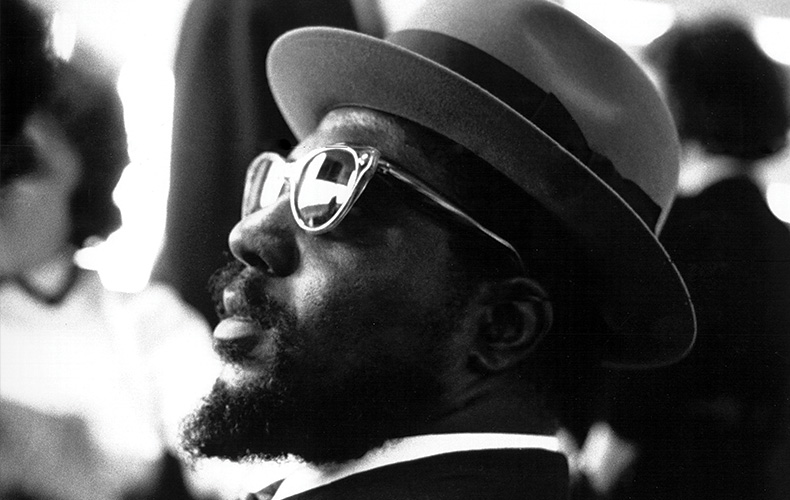
Photo by Herb Snitzer/Michael Ochs Archives/Getty Images
For better or worse, Monk’s public persona was one of extreme, almost mystical inscrutability. He was wildly introspective and capable of extreme focus, often to the exclusion of social niceties like greetings and small talk. He mumbled while he played and sometimes became overwhelmed with a desire to write, reportedly staying up pacing and working literally for days at a time. But sometimes, it was impossible for him to get out of bed. He could be notoriously taciturn, and when he did deign to talk to reporters he frequently parried obvious questions with philosophical games of “Who’s on First?” Frank London Brown learned this when he profiled Monk in 1958 for Downbeat magazine. Brown asked Monk where he thought modern jazz was going. “You can’t make anything go anywhere. It just happens,” replied Monk. His stalwart wife, Nellie, and his precocious adolescent niece both tried to help Brown out by rephrasing the question, but Monk would not be moved. “I don’t know where it’s going. Where is it going?...I don’t know how people are listening”—a wildly paradoxical response from a man whose work defined modern music for generations.
Everything about Monk’s life and work suggests a person unconditionally committed to the world in his head. Even in his poorest days, he never left the house unless cleanly appointed in a pressed suit and tie accessorized with an array of ascots, wild glasses, and funny hats. But while magazines and movies ran with this cartoon version of the scatting hep cat, Monk’s visage was authentically acquired, a product of his unceasing creativity. This desire, indeed, was what drove his offbeat and mesmerizing compositions. Early pieces like “Well You Needn’t,” with its spastic call and response, was laid out on a bed of chromatically rising and falling tones; “In Walked Bud,” a raucous tribute to best friend and mentor Bud Powell; and the Monk standard “Round Midnight,” which managed to fashion purposeful dissonance into a kind of slowly rollicking ethereal bliss, all stood out as pieces well ahead of their time. Not only musically, but in shape and meaning. In vibe. A vast cosmic wink permeated all of Thelonious Monk’s work. You never knew if he was crazy, or if he was just trolling you.
If you want to understand Monk trolling, you have to understand bebop trolling. Prior to the form’s inception, the once fiery swing genre had cooled to a series of bland big bands in dance clubs. The music had become simple, easy to comprehend. One and a two and a three and a four. Glenn Miller and Tommy Dorsey had taken over, and it was for white people again. Even Duke Ellington and Count Basie, as beautiful as their compositions were, enjoyed what fame they did outside of black communities precisely because they received benediction from the likes of Aaron Copeland, George Gershwin, and others; they had to prove they could speak the language of white music in order to be taken seriously. The framers of bebop—Monk, Dizzy Gillespie, Charlie Parker, Milt Hinton, and Kenny Clarke—began to rebel against this idea of “friendliness” in music, perhaps subconsciously at first, but then with greater purpose. They wanted to play music that expressed how life actually felt. Angry, complex. Tragicomic. Emotionally full. They began to experiment with more densely layered chords, stacked high like the levels of a skyscraper: 9ths, 11ths, 13ths, 15ths. Dissonance buried like gems within pockets of harmony. A smaller band with bigger freedom. A feeling that things were slightly off. Asymmetrical melodies that started off one way but didn’t resolve themselves. Didn’t assure the listener that everything was all right. Because everything wasn’t all right. Blacks were routinely beaten for being on the wrong side of town. New York City police forced every jazz musician to carry an identification card without which they were barred from playing. (Monk, by all accounts a generally sober fellow, nonetheless lost his when a car he was in with Bud Powell was pulled and a bag of heroin was found in the glove compartment.) The most gifted musicians in town often died broke and penniless, overdosing while country clubs played handsome fees to white men to perform their compositions. Bebop had chord progressions that took you for dangerous rides without exactly telling where you might be going. Musical cycles that tumbled you up one hill and down another side, landing you in an entirely different place than you began. And it was played fast. So fast, in fact, that musicians that didn’t know what was up couldn’t participate. They would be lost. And that was the point. If you didn’t understand it, then you couldn’t steal it. It wasn’t for you.
This insistence on leaving the less-learned behind was at the core of Monk’s singular and captivating peculiarity. Think of the piano intro to the iconic “Straight No Chaser.” Monk lays out a relatively straightforward melody but continues to plant dissonance bombs at the bottom of each figure. He then leverages the churning characteristics of bebop to return you to this same discomfort again and again at different points in the measure. It’s almost as if he’s testing you, teasing you like an older sibling, training you to hear it again and again until you understand the impartial beauty of its disfigurement, until you finally recognize the delicacy and grace of the perfectly placed wrong note. How spiritually necessary and personally honest it is to do things as they’re not supposed to be done.
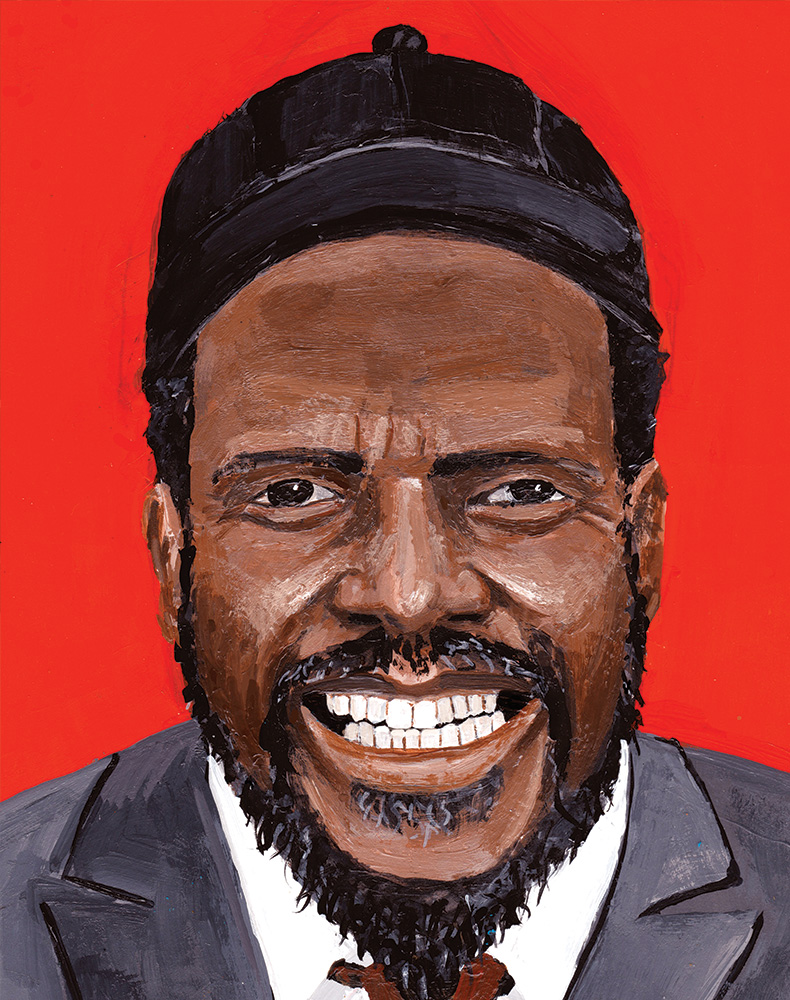
Sometimes it seems the entirety of black American music is about this: trying to carve out a space unspoiled by the overbearing whiteness of being. Slave songs were coded messages about escape and freedom. Blues was filled with complex and culturally specific imagery. Jazz expressed an attempt to deconstruct and complicate American band music in a way that captured the violent and frenetic pace of life in northern cities. R&B beat with hidden messages about revolutions and uprising in the ’60s. Then funk generated intergalactic imagery and a colorful form of mystical Egypto-alien visuals to create a world of inaccessible and separatist blackness.
In the early ’80s, hip-hop began as a tenement cultural collage, sly, transmutable, and infinitely self-referential. Run-D.M.C. took the disco goofiness of the Sugarhill Gang and planted it on cinder blocks in burned-out lots. N.W.A. took the Saturday morning b-boy cartoonism of Run-D.M.C. and infused it with the clear-eyed nihilism of the post-crack era. Biggie and Puff took the hole-in-the-shoes hoodism of N.W.A. and let the shit be platinum clean, razor sharp, and fabulous as fuck. Timbaland and Pharrell took Puffy’s gold-plated pinky rings off and let it be nerd-core. Kanye decided you could be therapeutically self-reflective while dropping televangelist-level braggadocio. And then Drake just started bodying people as an unapologetically suburban singing nigga. These contradictions weren’t just to be weird. They were meant to leave your ass behind. If you didn’t understand how these things worked together, then it was not for you. Every moment of this progression consists of a black artist making something that challenges the norm and tries to give life to the specificity of their experience. Every moment imbues the maker with the power that comes when you create music that is direct, epic, and (most importantly) impossible to understand for people that don’t live it. Doing things wrong is often how black people create their own freedom.
But the wizardry of Monk, who is comfortably situated in this 400-year tradition, is that he was as much a brilliant musical technician as he was a brilliant troll. He possessed indelible speed on the keyboard, as demonstrated by his vivid runs, tossed on to the ends of tunes as if to say, Yeah, I can do that shit, too. And his two-handed stride work, most evident on jumpy solo sessions like “North of Sunset” and even midtempo gems like “I’m Confessin,’” distinguished him from contemporaries who favored an aloof comping approach to their solo work—playing chords fully on the left hand. But the most lavish demonstrations of Monk’s aptitude come with his compositions. Probably none more so than his breakthrough album, 1957’s Brilliant Corners.
The title track is legendary, in that it almost caused a fist fight in the studio. Producer Orrin Keepnews had to stitch the final product together from 25 different takes. At one point during the recording, bassist Oscar Pettiford was just pretending to play, miming while the tape was running. He would never speak to Monk again after it was over. They worked on the song for five long, smoke-filled, tense, and probably stinky hours, and still couldn’t nail it. Monk brought it on himself. He was trolling the universe with this hilariously complicated hook, one that makes no sense whatsoever, except for the fact that it’s perfect. Last year, I tried to teach myself to hum it, and it took over three weeks of continuous listening just to get close. And yet what makes this track so good isn’t the technical proficiency it requires. It’s just what the melody means. Climbing and falling, unfolding over itself like a telescopic barroom fractal. And then the whole thing starts double timing. The song has two tempos, a loping 92 bpm passage that feels like stumbling home contentedly drunk—and then suddenly you’re tossed you into a breathless 108 that leaves you panting and looking over your shoulder. The composition knows exactly how much of each speed you can take, and every transition offers well-earned relief. It’s high-intensity interval training for your ears. Monk’s playing on the hook manages to simultaneously lead the procession and trail behind it like a child dropping magnolia petals in a glorious small-town parade.
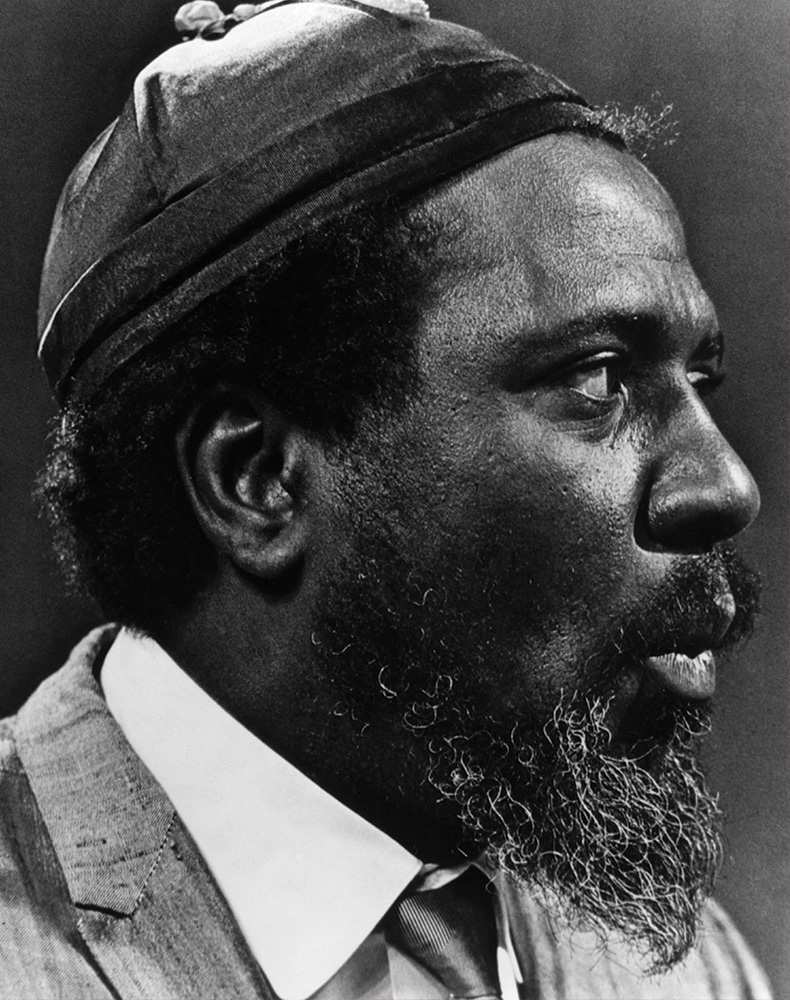
Photo by Echoes/Redferns
The Time magazine cover story, of course, did not go as Monk might have hoped. The writer, Barry Farrell, treated him as a zoo-ish curiosity, devoting over 5,000 words to describing his idiosyncrasies while only managing to include two or three direct quotes from his subject. Farrell does talk, however about the jazzman’s tendency for what he called “the put on,” which he defines as “a mildly cruel art invented by hipsters as a means of toying with squares.” Having missed the irony altogether, the writer barrels on with his portraiture of Monk as a mumbling, shuffling, sweating savant, rather than one of the most complex composers of the 20th century, and concludes by describing a sleeping Monk in an “Oriental” hat with cabbage on his lapel while his wife prepares ice cream for him. For Monk, who had spent a lifetime fucking with people in as many ways as he could think of—benignly, angrily, feigning ignorance, feigning interest, and most frequently just by subverting expectations—there’s a cruel yet entirely predictable irony to the fact that the most important piece written about him up until that point was written by someone completely unequipped to understand him. Barry Farrell did not grow up in a community of black warriors from a segregated military unit. He did not travel from church revival to small town to make money to help his mother. He did not teach himself to both play and subvert classical piano as a child. He did not have to, as a grown man, ask NYPD for a permission slip to make his art. He did not have to watch the best and most genius men of his generation kill themselves because they did not want American racism to do it first. But what the 28-year-old Farrell did have was a pen and a national magazine cover on which to explain his understanding of this man almost two decades his senior.
The Time magazine cover story, of course, did not go as Monk might have hoped. The writer, Barry Farrell, treated him as a zoo-ish curiosity, devoting over 5,000 words to describing his idiosyncrasies while only managing to include two or three direct quotes from his subject. Farrell does talk, however about the jazzman’s tendency for what he called “the put on,” which he defines as “a mildly cruel art invented by hipsters as a means of toying with squares.” Having missed the irony altogether, the writer barrels on with his portraiture of Monk as a mumbling, shuffling, sweating savant, rather than one of the most complex composers of the 20th century, and concludes by describing a sleeping Monk in an “Oriental” hat with cabbage on his lapel while his wife prepares ice cream for him. For Monk, who had spent a lifetime fucking with people in as many ways as he could think of—benignly, angrily, feigning ignorance, feigning interest, and most frequently just by subverting expectations—there’s a cruel yet entirely predictable irony to the fact that the most important piece written about him up until that point was written by someone completely unequipped to understand him. Barry Farrell did not grow up in a community of black warriors from a segregated military unit. He did not travel from church revival to small town to make money to help his mother. He did not teach himself to both play and subvert classical piano as a child. He did not have to, as a grown man, ask NYPD for a permission slip to make his art. He did not have to watch the best and most genius men of his generation kill themselves because they did not want American racism to do it first. But what the 28-year-old Farrell did have was a pen and a national magazine cover on which to explain his understanding of this man almost two decades his senior.
But to many of us who live lives of broken chords and impossible dissonance that nonetheless create wild and beautiful music, Monk’s message was as straightforward as the black keys on a piano. In the 1958 Downbeat profile, Frank London Brown reported that Monk’s wife Nellie once chided him for his opacity in the public eye. Monk, as usual, saw it differently. “I talk so plain,” he said, “that a deaf and dumb man can hear me.”
What could possibly be better than the four-on-the-floor grooves of the disco-era Rolling Stones? How about Annie Clark, a.k.a. St. Vincent, covering that group’s 1980 song “Emotional Rescue?” Well, slip on your platform shoes and set up a line of coke in a dank club bathroom, because thanks to the producers of the upcoming romantic comedy A Bigger Splash—starring Tilda Swinton and Ralph Fiennes—we have the all the proof we need.
Produced by Kendrick Lamar collaborators Sounwave and Terrace Martin, Clark’s take on the popular Stones single is very much in line with the guitarist/singer’s general sonic aesthetic, best exemplified on her latest self-titled record. It also seems to draw a lot of influence from the sort of jazz-funk fusion made most popular by Prince in the ’80s. But don’t just take our word for it, listen to it for yourself below:

Send your Newswire tips to tips@avclub.com
Previous Newswire Ted Cruz pulls campaign ad featuring former softcore actress
Next Newswire Jack McBrayer, Danny Pudi, and Joe Manganiello to voice Smurfs in the sequel
Need advice or cheering up or to see some photos of a guy working out in a muscle tee? Check VinBook. His page is a stream of resplendent images paired with tidbits of wisdom, generally quotes from Diesel. “Slow down and think about life,” VinBook advises. “Look inside yourself for the answers and always move forward with an open heart.” The advice, gentle and empowering, is transposed over placid images, most often beach sunsets.
There are also shoddily watermarked, fan-made photos of Vin looking contemplative, flexing his muscles and giving shockingly earnest takes on the struggles of life. Even though the images — VinArt — are often amateurish, he is gracious enough to always thank his fans for depicting him at all and, what’s more, VinBook always gives proper attribution. It’s part of the loving ethos of the page: Vin believes in you and your work. VinBook celebrates creativity because, in his world, there’s nothing more sincere than creating something and allowing yourself to be vulnerable enough to put it into the world to be judged. Every Sunday, he puts out a call on his page for his fans go out and make something.
The fan art is mixed in with a stream of behind-the-scenes shots from his movies, depicting the his goofy personality that is hilariously at odds with the epic costumes he’s wearing and the sets he battles on. There’s arecurring motif involving saving endangered African elephants, usually tied to Hannibal fan art.
Vin Diesel is better at social media than most professional social media people.
Imagine if your sewer pipe started demanding that you make major changes in your diet.
Now imagine that it got a lawyer and started asking you to sign things.
You would feel surprised.
This is the position I find myself in today with IFTTT, a form of Internet plumbing that has been connecting peacably to my backend for the past five years, but which has recently started sending scary emails.
If you've never heard of it, If-This-Then-That is a service that lets you connect websites together, so that things that happen in one place automatically trigger some regrettable action someplace else. For example, you might write an IFTTT ‘recipe’ that tweets anything you post on Facebook, because you are a monster.
A lot of Pinboard people use IFTTT. Yesterday, they received the following form letter:
Dear username,
We're working on a new IFTTT platform for developers that makes building Channels and Recipes a breeze.
Recently, we've worked with our partners to migrate to the improved platform, but some have chosen not to do so. Unfortunately, the Pinboard Channel did not migrate to the new platform and will be removed on April 4th.
Pinboard is one of our favorite services and we're all sad to see it go. We hope down the road it may be back.
Stay tuned to the latest Channels launching on IFTTT!
— The IFTTT Team
Because many of you rely on IFTTT, and because this email makes it sound like I'm the asshole, I feel I should explain myself.
In a nutshell:
IFTTT wants me to do their job for them for free
They have really squirrely terms of service
1. Working for Free
A service like IFTTT writes "shim code" that makes it possible to connect online services together like Legos. Everything slots into everything else. This is thankless, detailed work (like developing TurboTax or Dropbox) that when done right, creates a lot of value.
IFTTT has already written all this shim code. They did it when they were small and had no money, so it's difficult to believe they have to throw it away now that they have lots of staff and thirty million dollars.
Instead, sites that want to work with IFTTT will have to implement a private API that can change without warning.
This is a perfectly reasonable business decision. It is always smart to make other people do all the work.
However, cutting out sites that you have supported for years because they refuse to work for free is not very friendly to your oldest and most loyal users. And claiming that it's the other party's fault that you're discontinuing service is a bit of a dick move.
I am all for glue services, big and small. But it's better for the web that they connect to stable, documented, public APIs, rather than custom private ones.
And if you do want me to write a custom API for you, pay me lots of money.
2. Squirrely Terms of Service
The developer terms of service don't seem to be available by a public URL, so I will quote the bits that stung me. I invite IFTTT lawyers to send me a takedown notice, because that will be the funniest part of this fracas so far.
To begin with, IFTTT wants me to promise never to compete with them:
2.You shall not (and shall not authorize or encourage any third party to), directly or indirectly: [...] (xii) "use the Developer Tool or Service in conjunction with a product or service that competes with products or services offered by IFTTT. You hereby make all assignments necessary to accomplish the foregoing.”
Pinboard is in some ways already a direct competitor to IFTTT. The site offers built-in Twitter integration, analogous to IFTTT’s twitter->Pinboard recipe. I don’t know what rights I would be assigning here, but this is not the way I want to find out.
Next, they make a weird claim about owning not just their API and service, but the content that flows through it:
3. Ownership. IFTTT shall own all right, title, and interest (and all related moral rights and intellectual property rights) in and to the Developer Tool, Service, and Content.
They require that I do custom development work for them, for free, on demand:
11. Compatibility. Each Licensee Channel must maintain 100% compatibility with the Developer Tool and the Service including changes provided to you by IFTTT, which shall be implemented in each Channel promptly thereafter.
And they assert the right to patent any clever ideas I have while doing that free work for them, even though I hate software patents:
12. Patent License. Licensee hereby grants IFTTT a nonexclusive, sublicensable, perpetual, fully-paid, worldwide license to fully exercise and exploit all patent rights with respect to improvements or extensions created by or for Licensee to the API
Finally, they reserve the right to transfer this agreement to anyone at all, without my consent:
17.This Agreement is personal to Licensee and may not be assigned or transferred for any reason [...]. IFTTT expressly reserves the right to assign this Agreement and to delegate any of its obligations hereunder.
I say nuts to all that.
I'm sorry your IFTTT/Pinboard recipes are going to stop working.
It's entirely IFTTT's decision to drop support for Pinboard (along with a bunch of other sites). They are the ones who are going to flip the switch on working code on April 4, and they could just as easily flip the switch back on (or even write an IFTTT recipe that does it for them). Weigh their claims about Pinboard being a beloved service accordingly.
For users left stranded, I recommend taking a look at Zapier or Botize, which offer a similar service, or at one of the dozens of new sites that will spring up next week to capture the market that IFTTT is foolishly abandoning.

Although he has extensive film and TV credits—and a reputation as one of the early superstars of The Groundlings, the famed L.A. sketch and improv troupe—Paul Reubens will forever be associated with Pee-wee Herman. He created the character more than 35 years ago at The Groundlings, where it quickly became a hit that progressed to a bigger club, then an HBO special, and eventually, the hit 1985 film Pee-wee’s Big Adventure. That led to a critically acclaimed hit TV series Pee-wee’s Playhouse, which ran for five seasons, and another film, 1988’s Big Top Pee-wee. That film didn’t match its predecessor’s success, but the TV show would run through 1990 and score more than a dozen Emmys in the process. The character lay dormant for nearly 20 years until Reubens revived him for an acclaimed stage show, which eventually went to Broadway. That ...
Ivan Wernisch
translated by Jonathan Bolton
They appeared as the snow melted
Those who had perished in the last days of March,
Then those from the February skirmishes, followed by the dead of January
In the end there were also several who had fallen in November
The fewest in number, because there were still burials back then
Everyone waited together in the matted, golden-brown grass
And finally here was the river
One morning steam rose from a ship at the small wooden pier
It had brought chickens in cages, live pigs
The road to the city was open
I began to think of escape
via woodslot
Read that first, but then also read this follow-up.
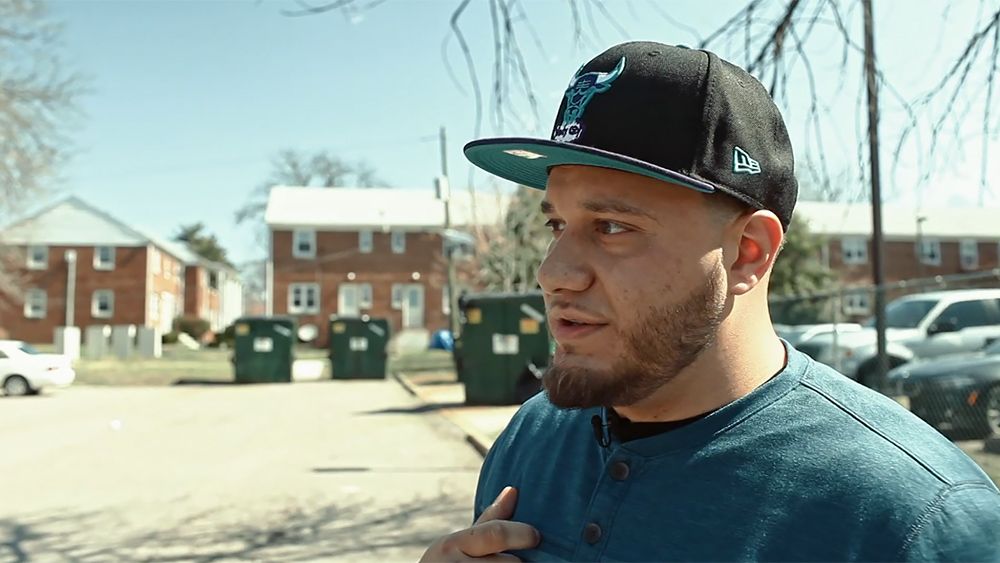
In 2007, three brothers, Dritan, Shain and Eljvir Duka, were arrested in their hometown of Cherry Hill, New Jersey for conspiring to kill US military personnel at nearby Fort Dix. They were alleged to be members of a terrorist cell that became known as the ‘Fort Dix Five’. Quickly deemed guilty in the court of public opinion, their verdict was made official in 2008 when they were each sentenced to life in prison. But were the Dukas’ arrests and convictions a major victory in the War on Terror, as the media, politicians and law enforcement claimed, or the unjust result of that same war gone very awry on US soil? Read The Intercept’s full investigation here.
By Aeon Video
Hey Jude - The Beatles (Trap Cover). As payback for the acoustic covers of Beyoncé’s “Formation”
LMFAO